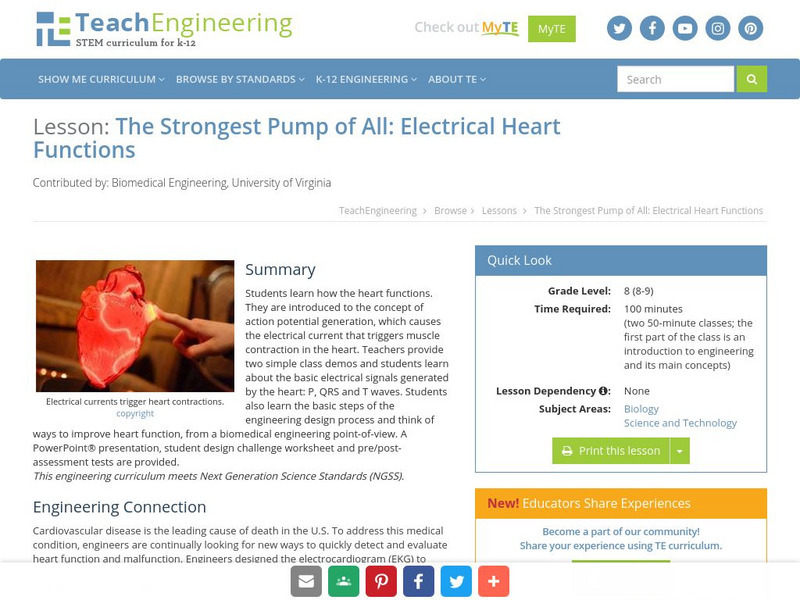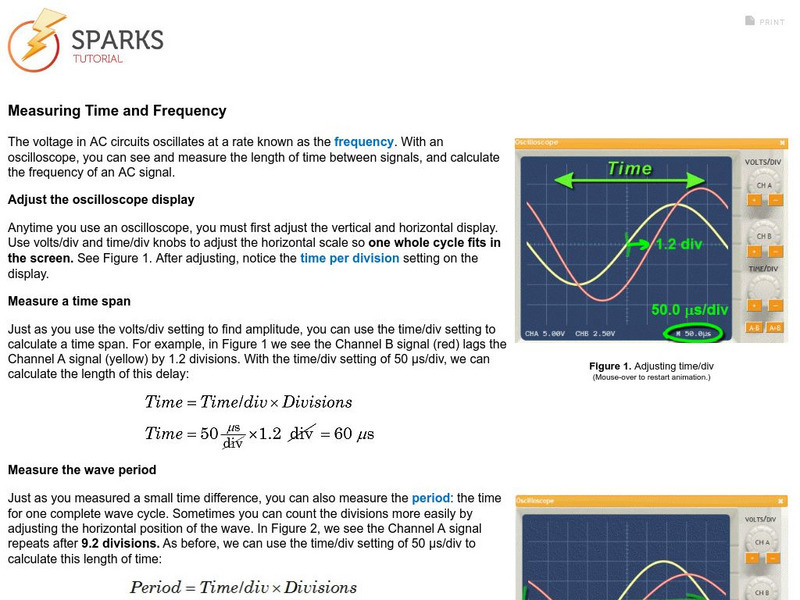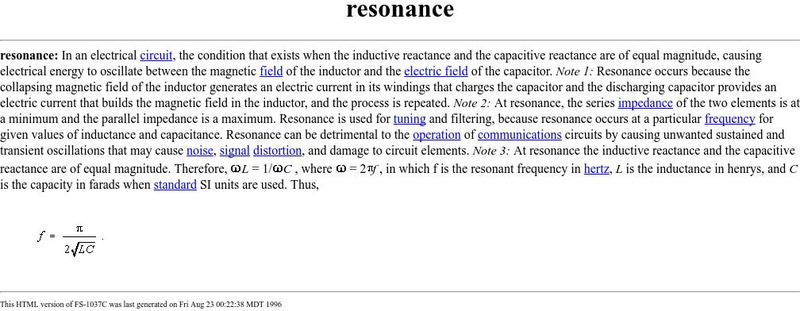Curated OER
Blast's Cosmic Carnival
Learners, after analyzing the history of a concentrator, model how a Genesis spacecraft concentrator works by playing a game. In groups of three or four, after being given materials to work with, are challenged to roll the rubber balls...
Curated OER
Marconi and the Radio: Reading Comprehension
In this reading comprehension worksheet, students read a selection, then complete 7 multiple choice questions. Students may click on an answer button for immediate feedback. Worksheet is labeled ESL, but is not exclusive.
Curated OER
2nd Grade Physical Sciences
Second graders complete activities to measure motion and learn about the Earth's history. In this motion and Earth history lesson, 2nd graders discuss sound and complete a matching sound activity. Students then study the history of Earth...
BioEd Online
Bio Ed Online: Neural Network Signals
Nervous system messages are sent as electrical signals along the length of axons and dissolved salts are important for electrical signaling in cells. In this lesson young scholars are introduced to this concept by creating an electrical...
Science Buddies
Science Buddies: How Does the Intensity of Light Change With Distance?
How far would you have to travel so that the light of the full sun would provide "daylight" no brighter than twilight on Earth? This project describes a method to verify the inverse square law: how light, sound, electrical signals, and...
CK-12 Foundation
Ck 12: Physical Science: Electronic Signal
[Free Registration/Login may be required to access all resource tools.] Covers electronic signal, how an electric current can be used to send an electronic message, what analog and digital signals are, and the difference between them.
University of Colorado
University of Colorado: Ph Et Interactive Simulations: Signal Circuit
Learn how electricity flows through a circuit by watching how the electrons move.
Massachusetts Institute of Technology
Mit: Open Course Ware: Introduction to Electronics, Signals, and Measurement
Online, college-level course on electronics. Class features the practical introduction to electronics with a focus on measurement and signals. Accessible components include downloadable lecture notes, assignments, and previous quiz and...
Khan Academy
Khan Academy: Electrical Engineering: Amplifiers
Amplifiers make signals bigger. Amplification is often the most basic operation of an electronic circuit. There are many kinds of amplifier designs. We will describe the operational amplifier, the building block of most analog electronics.
University of Colorado
University of Colorado: Ph Et Interactive Simulations: Signal Circuit
Why do the lights turn on in a room as soon as you flip a switch? Flip the switch and watch the electrons. Does the light turn on immediately? Explain using observations of the model.
TeachEngineering
Teach Engineering: The Strongest Pump of All
In this lesson the students will learn how the heart functions. Students will be introduced to the concept of action potential generation. The lesson will explain how action potential generation causes the electrical current that causes...
OpenStax
Open Stax: Anatomy & Physiology: The Action Potential
Students will learn the components of the membrane that establish the resting membrane potential, and find out the changes that occur to the membrane that result in the action potential.
PBS
Pbs Learning Media: How Is a Radio Wave Emitted?
This illustrated essay from A Science Odyssey Web site explains the science behind radio waves, including the role of electrons and electromagnetic fields.
National Cancer Institute at the National Institutes of Health
Seer Training Modules: Introduction to the Nervous System
Self-guided learning activity where students learn about the structure and function of the human nervous system. There is a short quiz at the end of the lesson to check for understanding.
Concord Consortium
Concord Consortium: Molecular Workbench Showcase: An Electronic Star Coupler
"This model shows a design of an electronic star coupler that can split an input electric signal into three outputs."
BBC
Bbc Nature: Hammerhead Sharks
Hammerhead sharks are recognizable for their bizarre head shape which is thought to make the shark more sensitive to electrical signals used to detect hidden prey. There are ten species of hammerhead. Learn more about hammerhead sharks...
PBS
Pbs Kids Design Squad: Supporting Steady Hands
Have you heard of a disease called Parkinson's? When people have this disease they often show signs or symptoms, like shaking uncontrollably. This shaking can make doing simple things harder. Emma Lawton is a person with Parkinson's, and...
Howard Hughes Medical Institute
Hhmi: Biointeractive: Molecular Mechanism of Synaptic Function
See how electrical and chemical signals are used by neurons to communicate with one another at synapse contact points. [1:09]
Concord Consortium
Concord Consortium: Measuring Time and Frequency
The voltage in AC circuits oscillates at a rate known as the frequency. With an oscilloscope, see and measure the length of time between signals, and calculate the frequency of an AC signal.
Smithsonian Institution
National Museum of Natural History: American Mammals: Star Nosed Mole
No other mammal in the world looks like the star-nosed mole, which has 22 fingerlike appendages surrounding its nostrils. It has recently been discovered that these very sensitive tactile organs are used for object manipulation, and...
Cosmo Learning
Cosmo Learning: Principles of Digital Communications I
A collection of video lectures from a course introducing students to the theory and practices in digital communications. Webpage includes twenty-four lectures from a professor at the Massachusetts Institute of Technology. Lectures vary...
Other
Institute for Telecommunication Sciences: Resonance
This site contains a straightforward definition of resonance in an electrical circuit.
National High Magnetic Field Laboratory
Magnet Academy: Lee De Forest
American inventor Lee De Forest was a pioneer of radio and motion pictures. He received more than 300 patents over the course of his lifetime, the most important of which was for a three-electrode vacuum tube, or triode, that he called...





















